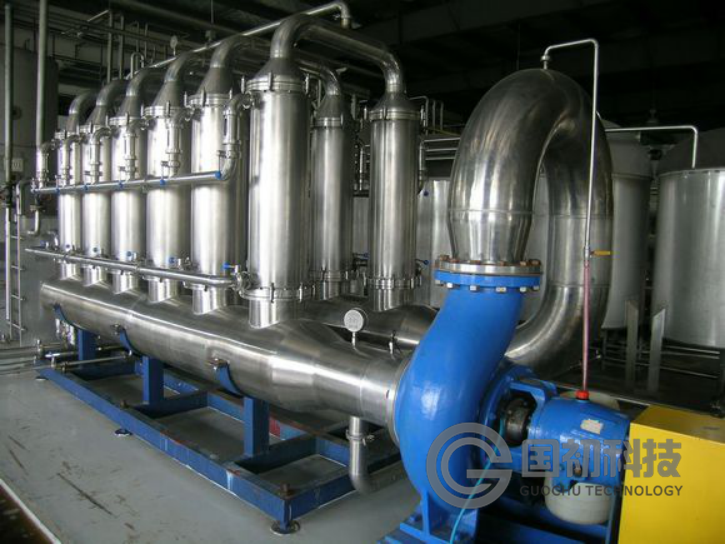

The source of oily wastewater in industrial production is very extensive, such as oil and gas field development process, the rolling process for emissions from formation water and metal surface cleaning liquid metal parts, cutting and grinding lubricant wastewater, in the metallurgical industry, petroleum chemical industry wastewater emulsion production wastewater, such as in oil storage and transportation ship accidents, vehicle cleaning, food processing process, they will produce oily wastewater.
Due to the lagging development of various technologies and imperfect management, a large number of oil products enter the water and form pollution. The harm of oily wastewater is enormous, such as floating oil decrease oxygen dissolved in water, cause serious damage to aerobic respiration for plants and animals in the water, and destroy the algae and bacteria metabolism, makes the deterioration of water quality and smell, causing serious environmental problems, and may even cause security problems due to coalescence of oil burning. In view of the pollution of oily wastewater, the maximum allowable discharge concentration of oily wastewater is 10 mg/L in china. Therefore, oily wastewater treatment is an urgent problem in the field of environmental engineering.
At present, oily wastewater treatment methods include physical methods, chemical methods and combined application of physical and chemical methods. Among them, coagulation sedimentation, mechanical oil removal (oil separation pool), air flotation method, porous media filtration, biochemical treatment, membrane method and other oily wastewater treatment field are widely used.
Table 1 Comparison of oily wastewater treatment technologies
| Method | Applicable scope | Removal of particle size /um | Main advantages | Main disadvantage |
| Air flotation | Free oil and emulsified oil | ≥10 | Good effect, mature process | It covers a large area, and the treatment effect of emulsified oil is poor |
|
Flocculation |
Emulsified oil | ≥10 | Good effect, mature process | It covers a large area and uses a large number of reagents |
| Electrolysis |
Emulsified oil |
≥10 | High oil removal efficiency, continuous operation | The device is complex, consumes large power, consumes a large amount of aluminum, and is difficult to be large |
| Electromagnetic adsorption | Emulsified oil | ≤60 | High efficiency of oil removal, small footprint | High power consumption and immature process |
| Membrane method | Emulsified and dissolved oil | ≤60 | Good water quality, simple equipment | High investment cost |
| Coarse graining | Free and emulsified oil | ≤10 | Small equipment, simple operation | The filter material is easy to be blocked, and the effect is bad when there is surfactant |
Membrane separation technology is a very popular physical separation technology: membrane technology, no phase change, no pollution, and high automation characteristics. The application of membrane technology in oily wastewater treatment has a hollow fiber membrane, tubular membrane, ceramic membrane, carbon tube membrane and so on.
Ceramic membrane has high separation efficiency, stable effect, good chemical stability, acid and alkali resistance, organic solvent resistance, bacteria, high temperature resistance, anti pollution, high mechanical strength, good regeneration performance, simple separation process, low energy consumption, easy operation and maintenance, long service life and many other advantages, has been successfully used in food and beverage, plant (Medicine) in many areas of material processing, bio medicine, fermentation, fine chemicals and etc.. In the treatment of oily wastewater, ceramic membrane has been widely used in oily wastewater treatment because of its good treatment effect, simple operation and high automation.
Oily wastewater has a wide range of sources, including oil field wastewater treatment, petrochemical refining wastewater, iron and steel industry wastewater, food processing wastewater, machinery processing industry wastewater, food wastewater. It is difficult to deal with oily wastewater emissions, especially emulsified oily wastewater. The standard oily wastewater treatment technology is poor as to effect of emulsified oil. The ceramic membrane uses its membrane pore and membrane material to sieve the oil-water membrane pore, the membrane material hydrophilic hydrophobic oil nature realizes to the oil and gas separation, and has no phase change, it does not add the chemical medicament, does not produce two times pollution, the operation is simple, the automaticity is high, the effluent quality is good. At present, in the application of the treatment of oily wastewater from ceramic membrane, two main sources of oily wastewater, including oil-bearing wastewater in cold rolling and reinjection treatment of oilfield production effluent, has been widely used, with the development of science and technology, improvement of environmental protection requirements, treatment effect has obvious advantages, and it has no chemical agents, no two pollutions, ceramic membrane oily wastewater treatment technology, will be more and more popular and widely used.
